Jotun is a beautiful game, a fact which has been noted as far back as Jotun ’s successful 2014 Kickstarter. Jotun: Valhalla Edition does nothing to compromise the integral appeal of the game: its lush graphics, incredible atmospherics, authenticity and the epic scale of Norse myth all remain intact. Even so, Jotun’s gameplay never quite manages to live up to its stunning visuals, and Valhalla mode does little to rectify that.
Jotun on consoles is a strange experience: not bad, just disconcerting. Everything about the game is redolent of the best of indie PC gaming, yet here I am running around on my PS4. When I pick up that controller, I’m subconsciously primed for a game that looks triple-A or is trying hard to fake it, not the lush, breathing, hand-drawn illustration of Jotun .
Weird holdovers like the 8-directional movement limitation help hammer in Jotun’s PC origins. It’s hard to see all the charming little details of your character's movement and attacks when you’re sitting on the couch, a few feet away from the screen: on PC those details are much closer to your face. For that alone, I’d go with PC over console edition.
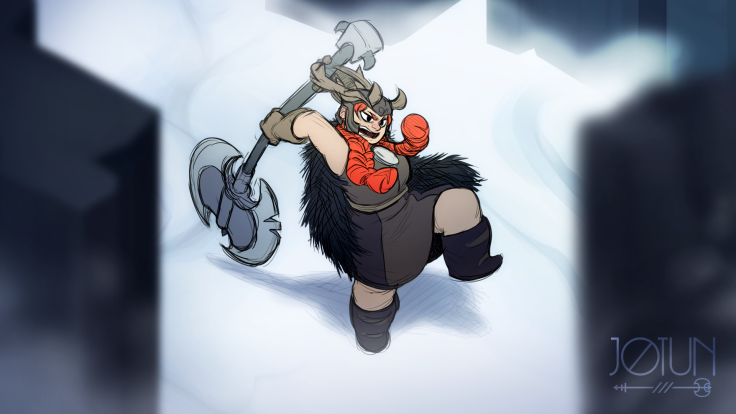
The story of Jotun is simple and unchanged in Valhalla Edition: you play Viking warrior Thora, who has died an inglorious death by drowning instead of in battle. Thanks to her deeds in life, the gods allow to prove her mettle after death so that she has a chance to enter Valhalla anyway. Thora’s husky voice throbs with emotion as she relates her story in Icelandic after each successful boss fight, though I confess I forgot the details in between realms.
The gameplay is as simple as the story: there are five realms ruled by different gods. Four of the realms have two worlds inside to explore (the first realm in which you begin only has one), and in each world is a rune you must collect.
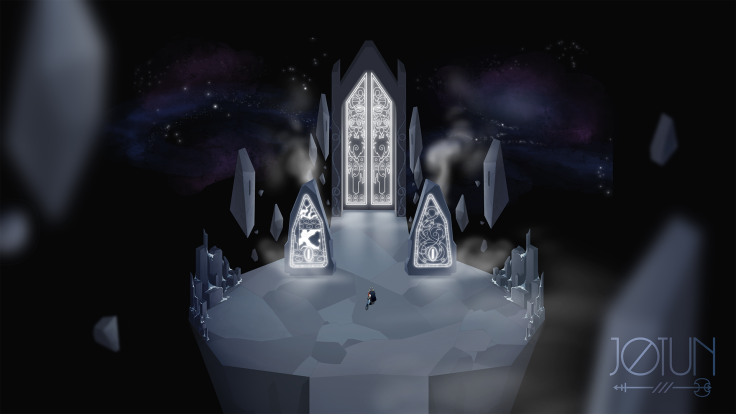
After collecting both runes, each realm features a boss battle against a mighty Jotun, a type of giant. Each realm has a theme and each world has a gimmick which you’ll see repeated in the boss fight.
As far as what you can do: not much. You can roll… walk… attack hard… and attack lightly, in eight limited directions. You collect god powers throughout the game that supplement your limited abilities, but for the most part, you’ll have to make the best of what you’ve got.
The worlds have simple puzzles, but gameplay isn’t really their point. They’re meant to look good and evoke wonder, magic and scale, and they succeed in this. One realm is in the skies, featuring a world where you walk between clouds on the aurora borealis to connect pinpoints of light, recreating Norse constellations.
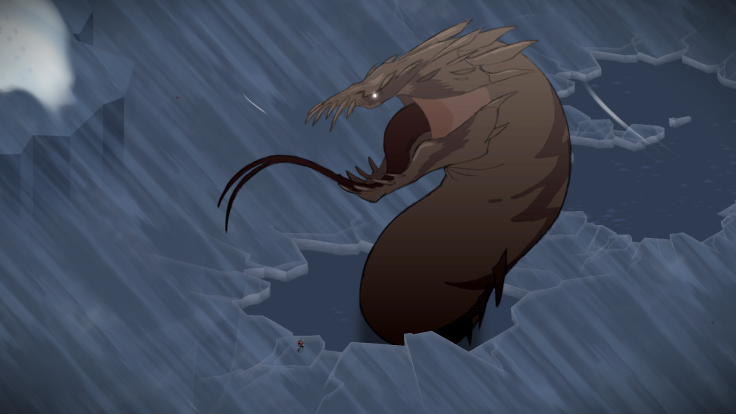
In a snowbound realm, one freezing world is little more than a sheet of ice under which a giant serpent lurks, its malevolent shadow growing as it approaches the surface, thrusting its monstrous head through and scaring the pants off me each time.
There are extra things to do in these worlds beside the big goal of finding a rune. You can search for the golden apple in each world that extends your health bar, you can look for the god statue that grants you divine power, or you can seek out healing at Mimir’s fountains. But Thora’s movement is a little slow for the vast expanses she must travel across, making exploration tedious - especially in worlds whose great challenge is the difficulty of traversing them.
On top of that, the maps don’t mark where you’re located. On one hand, that provides an additional layer of challenge, which these simple levels often lack. On the other hand, when so much of each world’s challenge is some kind of wrinkle in moving across the level, even the beautiful vistas start to wear thin.
The boss fights themselves are creative and gorgeous. Each Jotun has a different set of mechanics that change as their health bar goes down, and that health bar of theirs is pretty beefy. Sometimes you may choose to explore more worlds (and find more god powers and health bar apples) rather than tackle the boss, even if you’ve already collected the runes to face wii u jotun valhallathem. There’s a bit of walking before each boss, a mood-setting quiet gauntlet that builds to a crescendo of dread as you wake the Jotun and its massive form unfolds. Each boss is distinct visually and in its mechanics, and each boss’s look and fighting style is directly related to the realm you’ve just traversed.
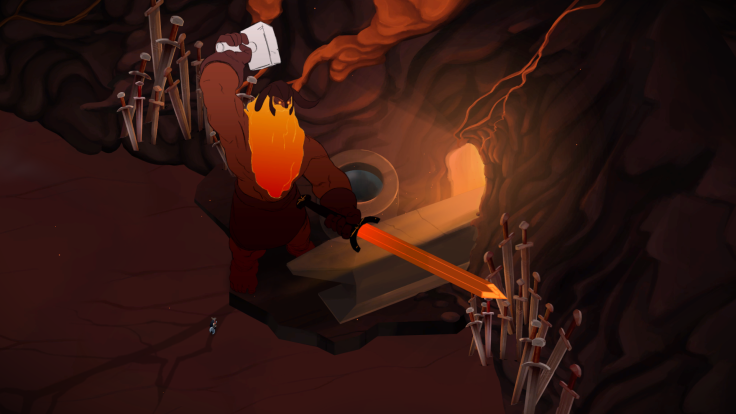
This is where Valhalla Edition comes into play. After you defeat the main game, you can choose to play in Valhalla mode, where you have all god powers, your health is maxed, and you can run through the boss battles as many times as you please. Bosses are tougher and their patterns change slightly. That’s it; that’s the mode.
For me, a game about exploration and atmosphere should lean on its story, not its boss battles. Yet Jotun places all its bets on those showdowns, and Valhalla Edition reaffirms that dedication. Chasing the perfect run, memorizing the correct chain of attacks, memorizing every footstep the boss will take because one missed move means death, taking on the challenge of fighting without god powers, fighting without getting hit even once - these are fun for some gamers. If this sounds like fun for you, Valhalla Edition is right up your alley.
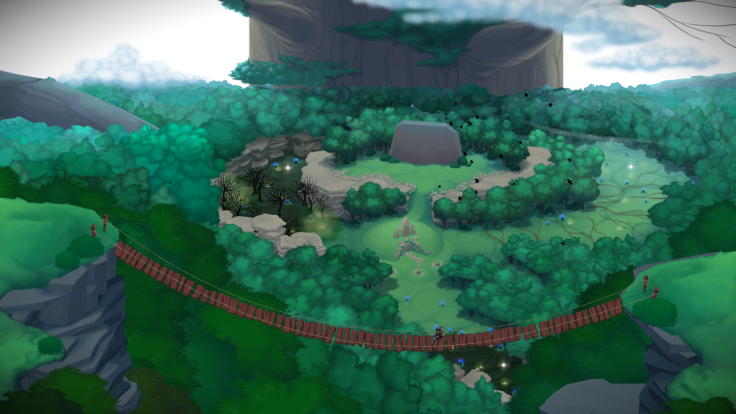
But it’s not fun for me. If exploring the lush realms that would otherwise invite a closer look is ultimately a tedious and unrewarding affair, and the simple story is presented in a forgettable piecemeal fashion, and the meat of the game is in tricking out its boss battles, I find it a missed opportunity. Jotun: Valhalla Edition is great at doing what it wants to do: taking its simple gameplay and making boss fights super hard while keeping the charms of its art direction and setting. But do you want to do what Jotun: Valhalla Edition wants you to do? That’s another question.
Jotun: Valhalla Edition is now available on PC/Mac/Linux, Xbox One, Wii U and PS4.


















